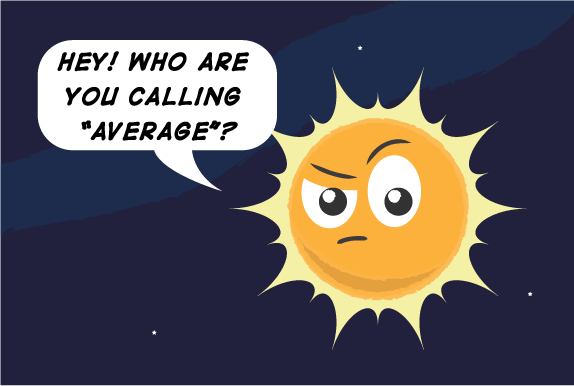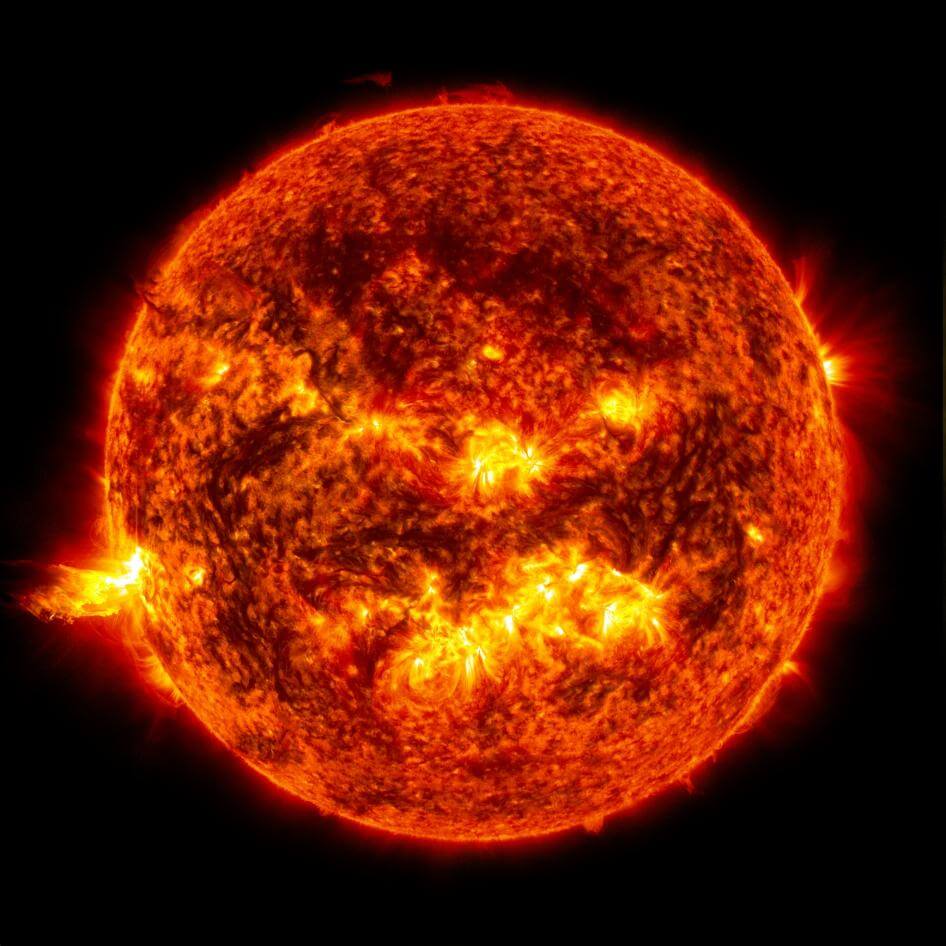Hottest Part Of The Sun
All About the Sun
A star is a hot, glowing ball of gas. When you wait up in the night heaven, you tin can encounter countless twinkling stars. Tin can y'all meet any stars during the daytime? Of form! The lite of daytime comes from our closest star: the Dominicus. Explore the Sun! Click and drag to rotate the Sunday. Curlicue or pinch to zoom in and out. Credit: NASA Visualization Technology Applications and Development (VTAD) Just how close is the Sun to World? Way, way closer than other stars, but even so pretty far away. It'due south approximately 93 million miles away from Earth. That's 400 times farther than the distance betwixt Earth and the Moon! However, it'south a skillful thing that Earth isn't also close to the Sun. If we were also close, information technology would exist mode as well hot to live here. The Sun'southward surface is very hot, and its atmosphere is fifty-fifty hotter. And the Dominicus's core is the hottest role of all, at a sizzling 27 meg degrees Fahrenheit! Our Lord's day is nigh 100 times wider than Earth, but it is just an average sized star. Astronomers have found some stars that are 100 times bigger than the Sun and others that are x times smaller. The Sunday is also right in the middle of its lifecycle. Right at present, our Sun is in a stage called xanthous dwarf. Information technology is most 4.5 billion years onetime. In some other 5 billion years the Lord's day will get a large, cool star called a blood-red giant. A few billion years after that, it volition become a small white dwarf star. It will shrink to around the aforementioned size as Earth, simply it volition weigh xx,000 times more. Click the above image to expand it. Our Sun is in the middle of its lifecycle. Information technology is a yellowish dwarf star. Credit: NASA/JPL-Caltech But even though our Sun is kind of an ordinary star, in that location are also a few things that brand our Lord's day quite special. For example… Life on Globe depends on the Sun. Here are but a few reasons why: Estrus and lite might exist of import for life on Earth, but the Dominicus sends other stuff, too. The Sun sends lots of other energy and small particles toward Earth. Globe'southward protective magnetic field and atmosphere shields us from most of the energy and particles. But sometimes a big stream of these particles reaches Globe and interacts with the gases at the outer edge of our temper. This causes streams of light in the sky, chosen auroras. In our solar arrangement, the closest planet to the Sun is Mercury. Our Dominicus's closest star neighbor is called Proxima Centauri. Information technology is approximately 4 light-years away. Start of all, y'all should never await directly at the Lord's day without very special protective eyewear. But NASA has many great pictures of the Sun for y'all to look at! Scientists apply telescopes with filters to capture images of the Sun. These images help us acquire about our star. The photo below was taken by a NASA spacecraft called the Solar Dynamics Observatory. This image captured by NASA's Solar Dynamics Observatory on June 20, 2013, shows the bright calorie-free of a solar flare on the left side of the Lord's day. Credit: NASA/SDO A spacecraft would easily burn up if information technology tried to fly into the Sun. However, NASA's Parker Solar Probe is flying closer than whatsoever other robotic explorer ever has. It volition be flight inside the Dominicus's atmosphere, or corona. This spacecraft will help us larn more than about how the Sun works and how solar activity starts. This helps us to be more than prepared! More fun facts about the Sun! NASA Solar System Exploration


We can't alive without the Sun!

The Sunday's Neighbors
What does the Sun look like?

Have whatsoever spacecraft visited the Sun?
For more than information visit:
If you liked this, you lot may similar:
Hottest Part Of The Sun,
Source: https://spaceplace.nasa.gov/all-about-the-sun/en/
Posted by: sancheznernat.blogspot.com


0 Response to "Hottest Part Of The Sun"
Post a Comment